
Chantal Joffe. Self-Portrait Naked with My Mother II, 2020 (detail). Oil on board, 243 x 181.5 cm (95 5/8 x 71 1/2 in). © Chantal Joffe. Courtesy the artist and Victoria Miro.
Victoria Miro, London
4 June – 31 July 2021
by BETH WILLIAMSON
The paintings in Story by Chantal Joffe (b1969) are extraordinary. There is such tenderness in the soft loose lines and brushwork of a body of new work that features her mother, Daryll, at different points in her life, and Daryll’s relationship with her children, including Joffe herself. These are psychological portraits as much as anything else and it is the emotional pull of those relationships that charges the gallery space.
Leaning back into the past, Joffe reaches for childhood memories of her mother and says of these paintings, “When they work it feels like some of that memory and time got caught in the paint”, and it does feel that way. Some memories of maternal relationships are commonly held, and that is something the writer Olivia Laing recognises in her essay Looking for Mother in the artist book that accompanies this exhibition. Laing observes: “While childhood memories stay reasonably intact, the sensory, textual and emotional landscapes of childhood are immensely fugitive, recurring in flashes.” This is what Joffe’s paintings do, they convey how it feels to be a small child.
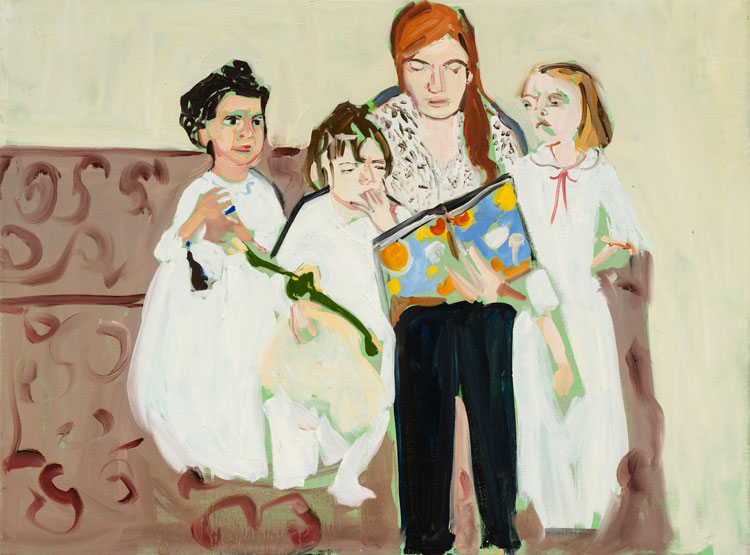
Chantal Joffe. Story, 2020. Oil on canvas, 60 x 80 cm (23 5/8 x 31 1/2 in). © Chantal Joffe. Courtesy the artist and Victoria Miro.
Writing about Story (2020), the painting of the exhibition’s title, an image of Joffe, her two sisters and their mother snuggled on the sofa reading a bedtime story, Laing says: “What’s remarkable about Joffe’s picture is that she’s managed to plug into a universal current, to capture and convey not just her own childhood, but mine and perhaps yours too.” Although I do not recognise that so called “universal current” from my own childhood, I do recognise something of it from the position of a mother. I visited this exhibition with my daughter, now aged 26, but it felt too intrusive to ask her what she might have recognised, or not, in Joffe’s paintings.
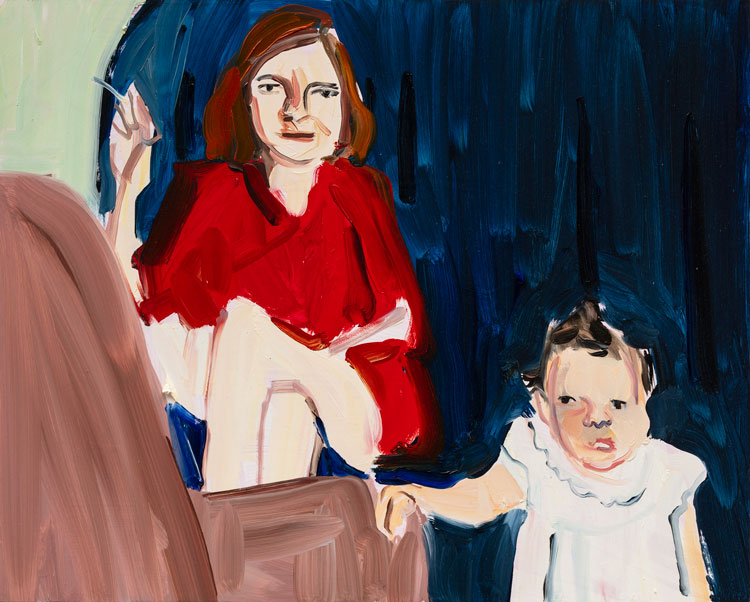
Chantal Joffe. Train to Vermont, 2020. Oil on board, 40.5 x 50.7 cm (16 x 20 in). © Chantal Joffe. Courtesy the artist and Victoria Miro.
Joffe has been painting her mother for more than 30 years. These new paintings, some from life and others from family photographs, show Joffe and her siblings with their mother at different stages in her life. Daryll is depicted when pregnant with Joffe in Train to Vermont (2020), and with an infant in the rather awkward First Baby (2020) and the raw Fourth Baby (2020). In First Baby, Daryll gazes down at the child in her arms, one hand supporting its head. There is a sense of awkwardness in the curve of her shoulder and stiffness in her arm as if she is lacking in confidence in her relationship with the child, despite its apparent passiveness at that moment. In Fourth Baby, which depicts Joffe’s younger brother Jasper, Daryll appears to deal confidently with bathing the red, screaming infant.
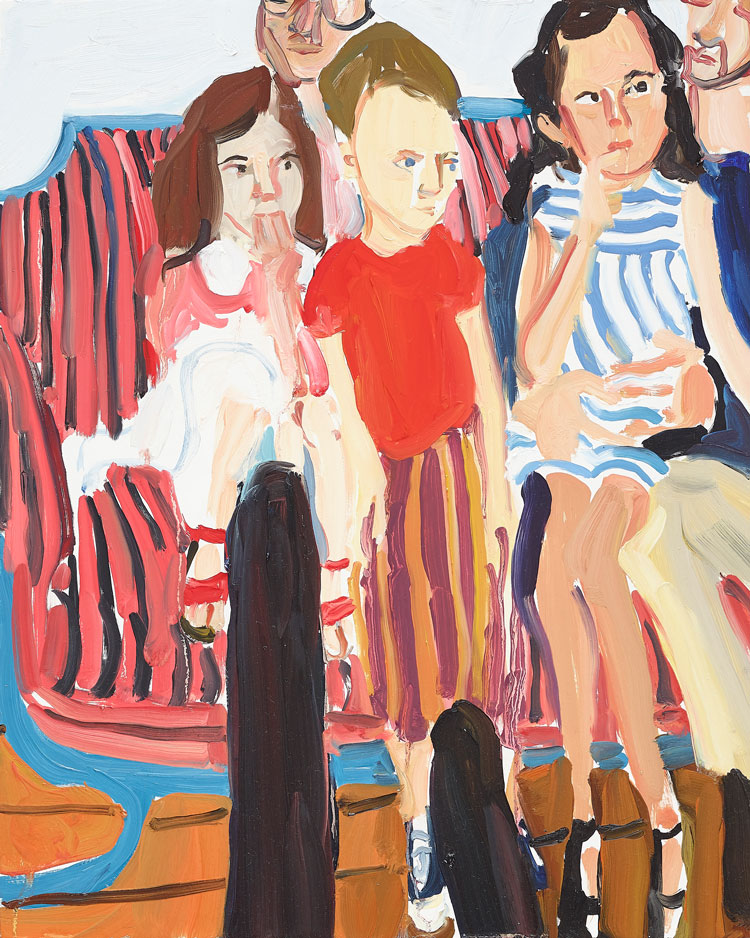
Chantal Joffe. Me, Em and Nat, 2020. Oil on board, 40 x 50 cm (15 3/4 x 19 3/4 in). © Chantal Joffe. Courtesy the artist and Victoria Miro.
Joffe and her siblings are depicted without their mother in Kool-Aid (2020) and Halloween (2020) and other images. It is in images such as these that I could recall, or perhaps imagine, a little of what it felt like to be a child with other children. The hand of an older child on a face or shoulder, the touch of long grass on bare legs, the shared excitement of dressing up for Halloween. Painting scenes prompted by old family photographs stirred up many memories for Joffe. In Halloween, for instance, she realises that her mother would have made the costumes they were wearing and the whole process of picking out a pattern in the sewing shop and the “nagging, whining and competing” of three sisters vying for attention and for their costumes to be made.
Joffe did not assemble these paintings in chronological order so there isn’t a straightforward chronology in the exhibition, which makes for interesting viewing and associations. The story of Story is, therefore, unpredictable as the viewer is taken back and forth through time at unexpected moments. I suppose memories often come back to us unbidden and knock us out of kilter, and Joffe is no different. As she has said, it is difficult even for an adult to see their mother as an independent person, to really see them clearly beyond their role as mother and that is what makes these images complex and thought provoking.
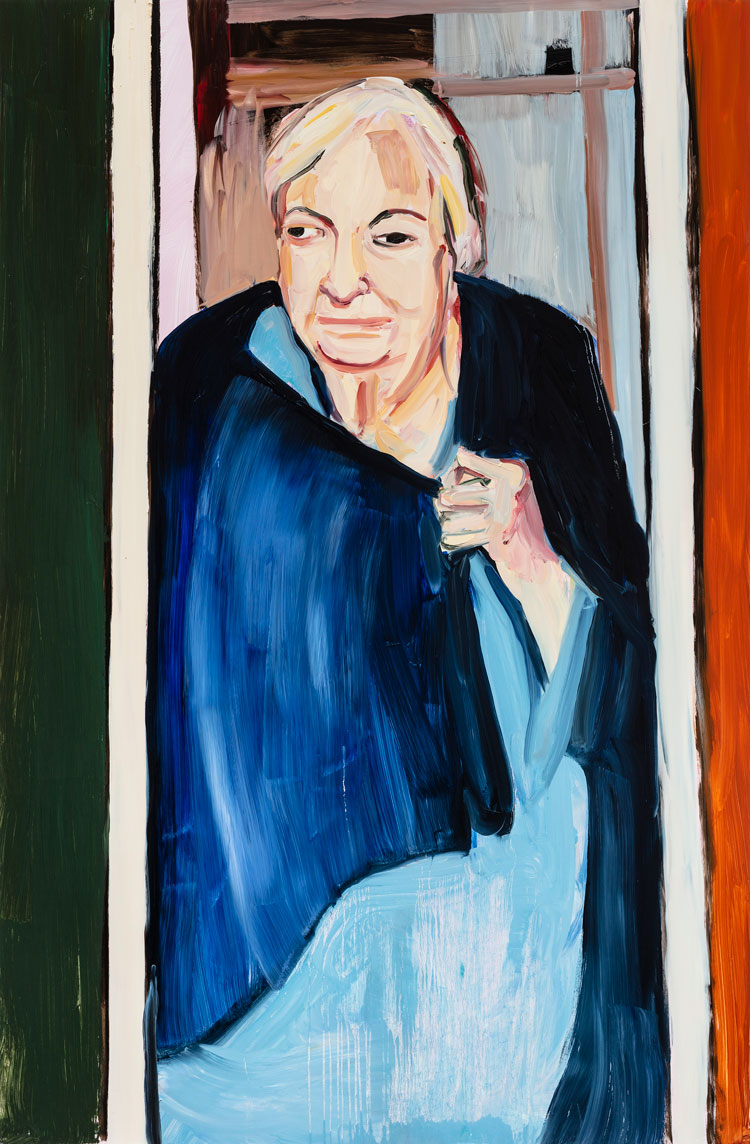
Chantal Joffe. My Mother in a Blue Shawl in her Doorway, 2020. Oil on board, 183 x 120 cm (72 1/8 x 47 1/4 in). © Chantal Joffe. Courtesy the artist and Victoria Miro.
Painting her mother through time is, for Joffe, an attempt to see her more clearly: “Nobody in their 70s is just that – they’re not just an older person who’s lonely, or isolated, or has health issues … Everybody is the whole life that went before that.” And that is exactly what we see in this exhibition. This is not just Daryll, the older woman with a bandaged eye, recovering from a cataract operation in Cataract (2020), or Daryll alone and vulnerable during the pandemic in My Mother in her Doorway (2020) or My Mother in a Blue Shawl in her Doorway (2020). It is also Daryll, the beautiful young red-haired woman, Daryll, the busy confident parent, Daryll, the stylish woman on a train. Daryll has her own history, born and brought up in South Africa, later living in America, Yugoslavia and England. She was arrested for protesting against apartheid, she worked as a child care officer and a housekeeper. She gained an MA in linguistics while raising her family. Still, as Laing puts it: “The mother recedes inch by inch, becoming smaller and harder, emerging as a person with needs and sadnesses in her own right.” This is the time when the mother who cared becomes the one cared for, when relationships are turned on their head and those who were vulnerable become those who protect. For me, it is the paintings of Daryll as she appears now that are the most poignant in this exhibition. In the older Daryll, I see sadness and strength, vulnerability and bravery and, even when depicted alone, she carries her own history with her and those important relationships with her children, too. In this way, the Daryll of My Mother in Blue Shawl in her Doorway is the same glamorous and defiant Daryll of Train to Vermont. She may have receded, but she certainly hasn’t disappeared. There is no question of that and if this exhibition does anything, it surely underlines her continuing importance in her children’s lives, whatever their age. Joffe is generous in what she shares in these paintings. Yes, they are closeup and personal. More than that, together they create a sensory and emotional landscape I didn’t want to leave.
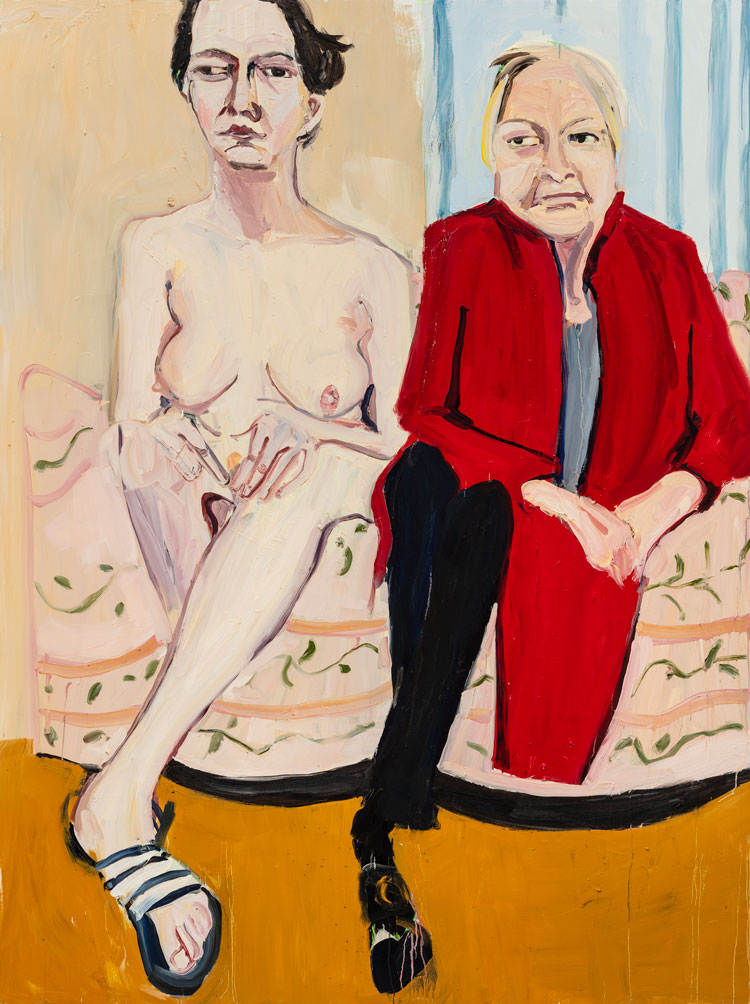
Chantal Joffe. Self-Portrait Naked with My Mother II, 2020. Oil on board, 243 x 181.5 cm (95 5/8 x 71 1/2 in). © Chantal Joffe. Courtesy the artist and Victoria Miro.